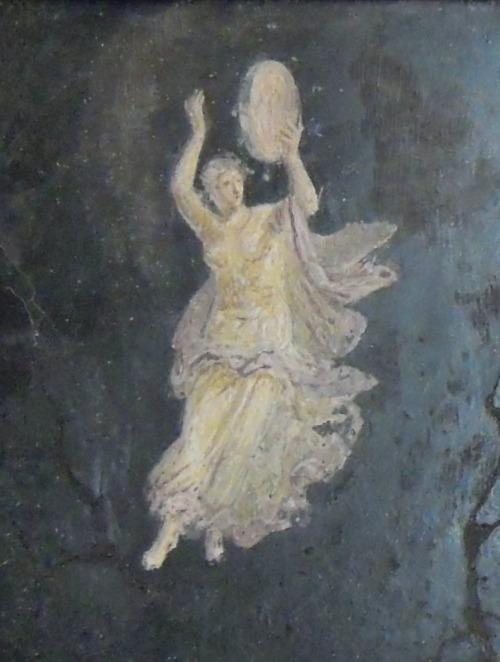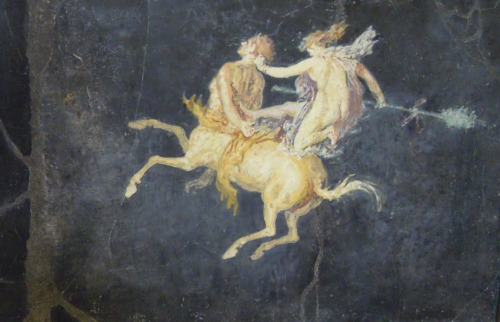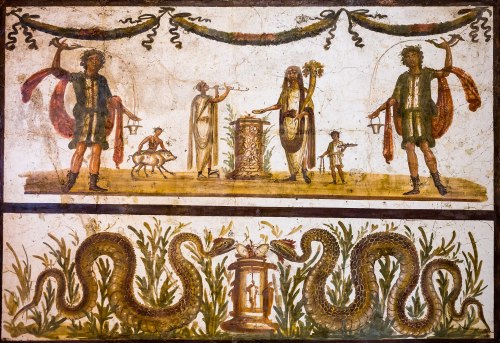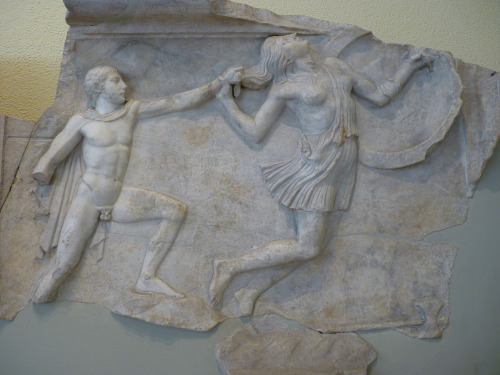#archaeological museum
“The paintress”. Fresco from the House of the Surgeon, Pompeii.
Naples Archaeological Museum.
Post link
The goddess Artemis. Wall painting from the Casa della Danzatrice, Pompeii.
Naples Archaeological Museum, Italy.
Photo by Luigi Spina
Post link
Wall painting from the Thermopolium/Caupona of Tertius (IX.7.21) Pompeii.
Goddess Fortuna, with cornucopia and rudder. (Naples Archaeological Museum)
Someone, perhaps the owner of the tavern, wrote on the wall:
CACATOR - CAVE MALUM = Shipper, beware of Evil.
Post link
The mythological beings used to fly and dancing in the wall paintings of Pompeii.
From the Casa di Cicerone.
Naples Archaeological Museum.
Pictures from: las-palabras-magicas.blogspot. (July 2010)
Post link
Omphale and Heracles. Fresco from Pompeii (VII 16-10)
The fresco depicts Heracles drunk in the presence of the Lydian queen Omphale; an attempt to show the power of wine and the god Bacchus.
Naples Archaeological Museum.
Post link
Fresco from Temple of Isis,sacrarium, north wall, Pompeii (VIII, 7, 28)
Above: navigium Isidis (boat of Isis) and another boat between two busts of Serapis; below: cista mystica between two snakes (similar to a lararium)
Naples Archaeological Museum, Italy.
By: ArchaiOptix, CC BY-SA 4.0, via Wikimedia Commons.
Post link
Silver situla decorating with bathing women; found in Herculaneum.
Naples Archaeological Museum, Italy.
Photo by Gary Todd ( CC0 )
Post link
Maenad and cupid. Fresco from the House of Lucio Cecilio Giocondo, Pompeii
Naples Archaeological Museum, Italy
By: Sailko (CC BY-SA 3.0) via Wikimedia Commons.
Post link
Wall painting from Pompeii.
Above: two lares with rhyton and situla, genius offering at an altar, flute-player, servant with vase and servant pushing a pig to the altar; below: altar with fruits and eggs between two Genius Loci snakes.
Naples Archaeological Museum, Italy.
By: ArchaiOptix (CC BY-SA 4.0) via Wikimedia Commons
Post link
Museo Archeologico Nazionale di Napoli
Today’s Flickr photo with the most hits: the Battle of Greeks and Amazons - bas relief in the Archaeological Museum of Piraeus.
Post link
Fresco from Temple of Isis,sacrarium, north wall, Pompeii (VIII, 7, 28)
Above: navigium Isidis (boat of Isis) and another boat between two busts of Serapis; below: cista mystica between two snakes (similar to a lararium)
Naples Archaeological Museum, Italy.
By: ArchaiOptix, CC BY-SA 4.0, via Wikimedia Commons.
Post link
























